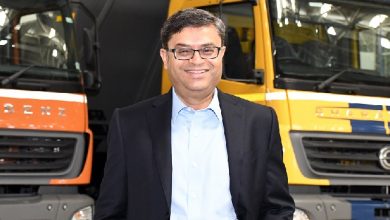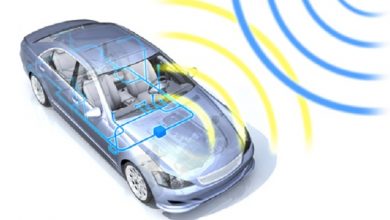Are you Connected?

Connected in today’s world doesn’t mean just being in contact. More than a connection, it is a pipeline of continuous data flow. From human connectivity to machine connectivity, the living spaces of people have changed a lot making the complex lifestyle apparently more simple and efficient. Humans always communicate and exchange information but nobody would have imagined that in future machines or devices would be communicating by themselves without human intervention. The journey of communication has been on an upward trajectory, from pictogram and scripts in the ancient time to telegraph, telephone, radio and television in the modern age. The world has come much closer, through newer modes of communication and with a faster exchange of information. Technology is enabling this change and believe me, this is not the end of technology advancement and honestly speaking this is not enough.
We are experiencing the same in one of the most advanced industry segments – “Automotive”. Similar to the field of communication, automobiles are undergoing a huge and rapid transformation. Starting from the first Motorwagen of “Carls Benz” using a gas engine to the rise of a giant “Toyota” using gasoline and hybrid solutions to the youngest and biggest automotive manufacturer by market capitalization “Tesla” riding high on electric vehicles. Today the amount of electronics penetration in modern vehicles is tremendous and thought provoking. Each vehicle has hundreds of devices/sensors generating thousands of data signals while moving on the road. Autonomous vehicles are the next big technological advancement in automotive industry where millions of data bytes will be generated each day.
Both, communications and automobiles are going through rapid advancements at higher speeds to achieve a common objective “BETTER CONNECTIVITY”. When these two fields come together to offer a faster and safer transport it’s called – Vehicle Telematics.
Now imagine a situation where father of a young girl asks his cloud assistant, “Where is Monica?” and the cloud assistant answers back:
Monica left office at 6:00pm. Started from her office with one person in the car. Had a stop at MG Road Coffee shop from 6:32pm to 7:12pm. Paid 1258 INR using her CC ending with 9004. Started from MG Road Coffee shop at 7:12pm alone and expected to arrive by 7:45pm. Currently near MIG market in North avenue. There is no traffic congestion on the way. Car speed is 48 KMs/hour, Tyre pressure is 34 psi and fuel level is 18 litres. Vehicle health is good. Routine maintenance service is due after 48 days or 3,600 KMs whichever is earlier. She is listening to song “see the world” by singer Peter Wan using car smart connection. If you need any more information, please feel free to ask me. Thank you.
Isn’t that really amazing? How the information is gathered and stored in a well knitted framework. The moment you need it; it is available with all of the finest details by a click or voice command.
(overriding the privacy point here with safety and security factor)
The ecosystem of a Vehicle Telematics is very complex with multiple stakeholders overlapping or transitioning responsibilities. However, the 3 most important elements of vehicle telematics are “Hardware, Connectivity and Analytics. The data from vehicle is received, read, analysed, encrypted, stored and transmitted using most secured network in real time by the hardware “Telematics Control Unit” (TCU).

Thousands of signals/messages resulting in generation of millions of data bytes while the vehicle is switched on and off the road, is the most vital information for an automobile manufacturer. Telematics Control Unit becomes the pivotal element in the value chain of vehicle Telematics to transport this data. This data helps car manufacturers in cutting down research and development expenses for designing future vehicles and at the same time reducing warranty cost by improving design and material.

This data is no less than gold in the modern automotive industry. How much you are generating, how fast you are transmitting and how good you are analysing is the key in this new era of automotive business.
We at Panasonic, cater to major automotive players such as Maruti Suzuki, Toyota, Honda, Renault Nissan, Isuzu, Hero MotoCorp and Honda Motorcycle and Scooters India (HMSI) to offer electronics in area of safety and comfort. We offer our advanced telematics control units enabling their vehicles talk to them and feed with the unlimited data available on the local vehicle network system. Panasonic is one of the world leaders in vehicle telematics solutions with TCUs, ECUs, Sensors and antennas to receive and transmit data. We are working in India since 2015, with a presence across all major automotive manufacturing clusters like Gurgaon, Chennai, Gujarat, Pune, and Bangalore to develop solutions for Indian market based on local and regional market requirements to make Indian automotive industry self-reliant.
Author:
Bhupesh Kanyal leads the Panasonic Automotive Systems India (PASI) division catering primarily to the automobile industry. He is responsible for devising strategy for new and existing products/ services and driving sustainable growth for the company. PASI is a B2B Tier 1 supplier of electronic parts in the area of safety and comfort to all major OEMs in India. Some of the major customers for Panasonic in India are Maruti Suzuki, Toyota, Honda, Renault Nissan, Isuzu, Hero Motocorp and Honda
Motorcycle and Scooters India.
Published in Telematics Wire




